Transcription
https://www.prisonpolicy.org/
(413) 527-0845
PRISON
POLICY INTIATIVE
Winnable criminal justice reforms
A Prison Policy Initiative briefing on promising state reform issues for 2021
_______________________________________________________________________________
CONTENTS
Expand alternatives to criminal justice responses to social problems.................................................1
Reduce the number of people entering the "revolving doors" of jail and prisons................................2
Improve sentencing structures and release processes to encourage
timely and successful releases from prison....................................................................................3
Reduce the footprint of the probation and parole system and support success on supervision..........5
Protect incarcerated people and families from exploitation by private contractors.............................7
Promote physical and mental health among incarcerated and formerly incarcerated people..............7
Give all communities equal voice in how our justice system works......................................................9
Eliminate relics of the harmful and racist "war on drugs".....................................................................10
EXPAND ALTERNATIVES TO
CRIMINAL JUSTICE SYTEM RESPONSES TO SOCIAL PROBLEMS
Redirect public funds to community organizations that provide social services
Problem: Many communities in the U.S. are not only overpoliced, but deprived of resources they could use to prevent crime without punishing or surveilling community members, such as youth programs and affordable housing.
Solutions: Shift funding from local or state public safety budgets into a local grant program to support community-led safety strategies in communities most impacted by mass incarceration, over-policing, and crime. States can use Colorado's "Community Reinvestment" model; currently, four Community Reinvestment Initiatives will provide $88 million over the next few years to community-based services in reentry, harm reduction, crime prevention, and crime survivors.
More information: See the Colorado Criminal Justice Reform Coalition's Community Reinvestment Overview Memo https://www.ccjrc.org/wp-content/uploads/2018/10/Oct-2018-Community-Reinvestment-Overview.pdf, the Center for American Progress report Reducing the Scope of Policing https://cdn.americanprogress.org/content/uploads/2020/07/28150215/Reducing-the Scope-of-Policing.pdf, and the Urban Institute's Investing Justice Resources to Address Community Needs https://www.urban.org/sites/default/files/publication/96241/investing_justice_resources_to_address_community_needs.pdf.
Fund and implement alternative response system for calls involving people with disabilities or experiencing mental health crises
Problem: People with disabilities and mental illnesses represent a disproportionate number of people arrested and jailed every year, but police and jail staff do not have the specific, in-depth training -- nor the mandate -- to treat mental illness or to accommodate those with other disabilities. As a result, at least 25% of people killed by police have a serious mental illness and suicide is the leading cause of death in local jails.
Solutions: Cities, counties, and states should establish non-police crisis response systems. A promising model is Eugene, Oregon's CAHOOTS program, which dispatches medical specialists rather than police to 911 calls related to addiction, mental health crises, and homelessness.
(continued on pages two through ten)
More information: For details about the CAHOOTS program, see https://whitebirdclinic.org/cahoots/; for a review of their strategies ranging from police-based responses to community-based responses, see the Vera Institute of Justice report Behavioral Health Crisis Alternatives https://www.vera.org/behavioral-health-crisis-alternatives and the Brookings Institute's Innovative solutions to address the mental health crisis: Shifting away from police as first responders https://www.brookings.edu/research/innovative-solutions-to-address-the-mental-health-crisis-shifting-away-from-police-as-first-responders/.
Decriminalize youth and stop prosecuting and sentencing them as adults
Problem: The Supreme Court has affirmed that until someone is an adult, they cannot be held fully culpable for crimes they have committed. Yet in every state, youth under 18 can be tried and sentenced in adult criminal courts, and in 16 states there is no minimum age. The juvenile justice system can also be shockingly punitive: In most states, even young children can be punished by the state, including for "status offences" that aren't law violations for adults, such as running away.
Solutions: "Raise the age" of juvenile court jurisdiction to reflect our current understanding that youth should not be held culpable as adults are; also "raise the floor" to stop criminalizing young children. States should end the transfer of youth to adult courts and systems of punishment, and move "status offences" out of the court's jurisdiction. Finally, redirect public funds from systems that punish and confine youth to community-based services that report better outcomes.
More information: The National Conference of State Legislatures offers a map and summary of Juvenile Age of Jurisdiction And Transfer to Adult Court Laws https://www.ncsl.org/research/civil-and-criminal-justice/juvenile-age-of-jurisdiction-and-transfer-to-adult-court-laws.aspx. The recently-closed Campaign for Youth Justice's resources will continue to be offered by The Sentencing Project; particularly useful are their summaries of legislative reforms to Raise the Age, limit youth transfers, and remove youth from adult jails http://www.campaignforyouthjustice.org/images/reportthumbnails/CFYJ%20Annual%20Report.pdf. For community-driven solutions, see Youth First Initiative's No Kids in Prison campaign https://www.nokidsinprison.org/solutions, and for status offense reforms, see the Vera Institute of Justice's Status Offense Toolkit https://www.vera.org/publications/status-offense-toolkit.
REDUCE THE NUMBER OF PEOPLE
ENTERING THE "REVOLVING DOORS" OF JAILS AND PRISONS
Use alternatives to arrest and incarceration for low-level offences
Problem: One out of every three people behind bars is being held in a local jail, and most for low-level or nonviolent offences. Spending time in jail leads to a number of collateral consequences and financial roadblocks to successful reentry, and higher recidivism rates that quickly lead to higher state prison populations.
Solutions: Although jails are ostensibly locally controlled, the people held in jails are generally accused of violating state law, so both state and local policymakers have the power to reduce jail populations. State leaders can:
• Reclassify criminal offenses and turn misdemeanor charges that don't threaten public safety into non-jailable infractions, or decriminalise them entirely.
• Make citations, rather than arrest, the default action for low-level crimes.
• Encourage juges to use non-monetary sanctions rather than fines and fees, and ensure that judges are holding indigency hearings before imposing and enforcing unaffordable fees.
• Institute grace periods for missed court appearances to reduce the use of "bench warrants," which lead to unnecessary incarceration for low-level and even "non-jailable" offenses. Establish an "open hours court" for those who have recently missed appearances to reschedule without fear of arrest.
More information: See our reports Era of Mass Expansion: Why State Officials Should Fight Jail Growth https://www.prisonpolicy.org/reports/jailsovertime.html and Arrest, Release, Repeat: How Police and Jails Are Misused to Respond to Social Problems https://www.prisonpolicy.org/reports/repeatarrests.html, and The Bail Project's After Cash Bail: A Framework for Reimagining Pretrial Justice https://bailproject.org/after-cash/bail/.
page 2
End pretrial detention for most defendants
Problem: Many people who face criminal charges are unnecessarily detained before trial. Often the sole criteria for release is access to money for bail. This puts pressure on defendants to accept plea bargains even when they are innocent, since even a few days in jail can destabilize their lives: they can lose their apartment, job, and even custody of children. Pretrial detention also leads to jail overcrowding, which means more dangerous conditions for people in jail, and it drives sheriffs' demands for more and bigger jails - wasting taxpayer dollars on more unnecessary incarceration.
Solutions: States should implement bail reforms that end or severely restrict the use of money bail, establish the presumption of pretrial release for all cases with conditions only when necessary, and offer pretrial services such as reminders to appear in court, transportation and childcare assiss=tanxe for court appearances, and referrals to needed social services.
More information: See The Bail Projects's After Cash Bail: A Framework for Reimagining Pretrial Justice https://bailproject.org/after-cash-bail/; Pretrial Justice Institute's website https://www.pretrial.org: the Criminal Justice Policy Program at Harvard Law School's Primer on Bail Reform http://cjpp.law.harvard.edu/assets/FINAL-Primer-on-Bail-Reform.pdf: and our briefing Technical violations, immigration detainers, and other bad reasons to keep people in jail https://www.prisonpolicy.org/blog/2020/03/18/detainers/.
Properly fun and oversee indigent defense
Problem: Low-income adults and children are frequently found guilty and incarcerated without an attorney or they are given an appointed attorney who is unqualified, financially conflcted, or whi is so overworked that the defendant receives, in effect, no representation at all. This happens despite the fact that the Sixth and Fourteenth Amendments to the U.S. Constitution require states to proivide effective representation to the indigent accused of cries where incarceration is a potential punishment. Many states delegate this constitutional obligation to local governments, and then completely fail to hold local goverments accountable when they fail to provide competent defense counsel.
Solutions: States must either: directly fund and adminster the services that provide indigent defense;or create a state entity with the authority to set, evaluate, and enforce indigent defense standards for services funded and adminstered by local governmentsm and then completely fail to hold local governments.
More information: Know Your State https://sixthamendmendment.org/know-your-state/ from the Sixth Amendment Center is an invaluable guide to the structure of each state's indigent defense system, including whether each state has an independent commission with oversight of all public defense system https://www.americanbat.org/content/dam/aba/administrative/legal_aid_indigent_defendants/ls_schlaid_def_tenprinciplesblooklet.authcheckda.pdf and the American Legislative Exchange Council's (ALEC) Resolution in Support of Public Defense https://www.alec.org/model-policy/resolution-in-support-of-public-defense/.
Improve Sentencing Structures And Release Processes to Encourage Timely And Successful Releases From Prison
Make it easier to change excessive prison sentences
Problem: Nationally, one of every six people in state prisons have been incarcerated for a decade or more. While many states have taken laudable steps to reduce the number of people serving time for low-level offenses, little has been done to bring relief to people needlessly serving decades in prions.
Solutions: State legislative strategies include: enacting presumptive parole, second-look sentencing, and other common-sense reforms, such as expanding "good time" credit policies. All of these changes should be made retroactive, and include people convicted of both violent and nonviolent offenses.
Example bill: The Second Look Act of 2019 https://www.congress.gov/bill/116th-congress/senate-bill/2146, which proposed to allow people to petition a federal court for a sentence reduction after serving at least 10 years.
page 3
More information: See our reports Eight Keys to Mercy: How to shorten excessive prison sentences https://www. prisonpolicy.org/reports/longsentences.html and Reforms Without Results: Why states should stop excluding violent offenses from criminal justice reforms https://www.prisonpolicy.org/reports/violence.html
Repeal or reform mandatory minimum sentences and similar automatic sentencing like "sentencing enhancements" have fueled the country's skyrocketing incarceration rates, harming individuals and undermining our communities and national well-being, all without significant increases to public safety.
Solutions: The best course is to repeal these laws so that judges can craft sentences to fit the unique circumstances of each crime and individual, but where that option is not possible, states should adopt sentencing "safety valve" laws, which give judges the ability to deviate from the mandatory minimum under specified circumstances.
Model and example bills: Several examples of state and federal statutes are included in Families Against Mandatory
Minimums” (FAMM) Turning off the Spigot: How Sentencing Safety Valves Can Help States Protect Public Safety and Save Money https://famm.org/wp-content/uploads/State-Safety-Valve-Report-Turning-Off-the-Spigot.pdf; see also American Legislative Exchange Council's (ALEC) Justice Safety Valve Act https://www.alec.org/model-policy/justice
safety-valve-act/.
More information: See FAMM's Turning off the Spigot: How Sentencing Safety Valves Can Help States Protect Public Safety and Save Money and our Geographic Sentencing Enhancement Zones page https://www.prisonpolicy.org/zones.html.
Stop mandating programming requirements that impede release on parole
Problem: The release of individuals who have already been granted parole is often delayed for months because the parole board requires them to complete a class or program (often a drug or alcohol treatment program) before they can go home - yet those programs are not readily available to them. In some states - notably Tennessee and Texas - thousands of people whom the parole board has been deemed "safe" to return to the community remain incarcerated simply because the state has imposed this bureaucratic hurdle.
Solutions: Parole boards can waive these requirements or offer community-based programming after release. Research shows that these programs are effective when offered after release, as part of the reentry process. More information: See our briefing When parole doesn't mean release https://www.prisonpolicy.org/blog/2020/05/21/program-requirements.
Increase the dollar threshold for felony theft
Problem: Generally, the dollar amount of a theft controls whether the crime is treated as a felony or a misdemeanor. In many states, these limits have not been increased in years, even though inflation has risen almost every year, making stagnant thresholds increasingly punitive over time.
Solutions: States should increase the dollar amount of a theft to qualify for felony punishment, and require that the threshold be adjusted regularly to account for inflation. This change should also be made retroactive for all people currently in prison, on parole, or on probation for felony theft.
Model bill: See the Public Leadership Institute's Felony Threshold Reform Act https://publicleadershipinstitute.org/model-bills/
public safety/felony-threshold-reform-act/.
More information: For the felony threshold in your state and the date it was last updated, see our explainer How inflation makes your stare harsher today than it was yesterday https://www.prisonpolicy.org/blog/2020/06/10/felony-thresholds/. "The Pew Charitable Trusts report States Can Safely Raise Their Felony Theft Thresholds, Research shows https:// www.pewtrusts.org/en/research-and-analysis/articles/2018/05/22/states-can-safely-raise-their-felony-theft-thresholds research-shows demonstrates that in the states that have recently increased the limits, this did not increase the risk of offending nor did it lead to more expensive items being stolen.
REDUCE THE FOOTPRINT OF THE PROBATION AND PAROLE SYSTEMS
AND SUPPORT SUCCESS ON SUPERVISION
Reduce the length of probation sentences
Problem: Because probation is often billed as an alternative to incarceration and is often imposed through plea bargains, the lengths of probation sentences do not receive as much scrutiny as they should. Excessively long sentences put defendants at risk of lengthy incarceration for subsequent minor offenses or even worse, incarceration for minor violations of probation rules ("technical violations”).
Solutions: States should set upper limits for probation sentences and enable early discharge by awarding" compliance credits" for successfully meeting probation's requirements for a given time period.
Example bills: Several states, including California (AB 1950 (2020)), Florida (Fla. Stat. S 948.04), Louisiana (Act 280 (2017)). New York (S4664A (2014), and Virginia (HB5148(2020)) have shortened probation sentences by eliminating minimum sentences, setting caps on probation sentences, or awarding compliance credits. ALEC has an Earned Compliance Credit Act https://www.alec.org/model-policy/earned-compliance-credit-act/, but Louisiana's law is stronger.
More information: For more on how probation sets people up to fail, see our report Correctional Control 2018: Incarceration and supervision by state https://www.prisonpolicy.org/reports/correctionalcontrol2018.html and for more on downsizing probation, see the Executive Session on Community Corrections report Less Is Morc: How Reducing Probation Populations Can Improve Outcomes https://www.hks.harvard.edu/sites/default/files/centers/ wiener/programs/pej/ files/less_is_more_final.pdf.
Eliminate re-incarceration and minimize jail time for technical violations of probation or parole rules
Problem: Incarcerating people for technical violations of probation and parole conditions is a common but harmful and disproportionate response to minor rule violations. These unnecessary incarcerations make it harder for people under supervision to succeed and lead to higher corrections costs. In 20 states, more people are admitted to prison for technical violations than for new crimes (see The Council of State Governments' report Confined and Costly to see the scale of the problem in your state https://csgjusticecenter.org/publications/confined-costly).
Solutions: States should limit incarceration as a response to supervision violations to only when the individual has committed a new crime and poses a direct threat to public safety. When incarceration is used to respond to technical violations, the length of time served should be limited and proportionate to the harm caused by the non-criminal rule violation.
More information: See the Pew Charitable Trusts report To Safely Cur Incarceration, States Rethink Responses to Supervision Violations https://www.pewtrusts.org/-/media/assets/2019/07/pspp_states_target_technical_violations_v1.pdf.
End electronic monitoring for people on community supervision
Problem: Individuals on pretrial supervision, probation, and parole face an array of conditions that may result in them being returned to jail or prison even without committing another crime. Electronic monitoring imposes unnecessary, often contradictory, conditions on recently released individuals, hindering their movement, and creating serious barriers to successful reentry.
Solutions: States can introduce and enforce legislation that would outlaw the imposition of electronic monitoring devices for individuals on pretrial supervision, probation, or parole. Until then, individuals forced to wear electronic monitors should not be required to pay for those devices nor be fined or re-incarcerated for their inability to pay monitoring fees. When ordered as a condition of pretrial supervision, defendants should be credited for time served on electronic home detention
Example bill: See Illinois HB3887 (2017), which would have provided credit for time served for people on monitors awaiting trial, ended user fees, and allowed them 8 hours outside the home to support employment, education, family,
community, and religious activities. More information: Challenging E-Carceration https://www.challengingecarceration.org provides details about the encroachment of electronic monitoring into community supervision, and fact sheets, case studies, and possible solutions are available from the Center for Media Justice https://mediajustice.org/challengingecarceration/.
Eliminate driver's license suspensions for nonpayment of fines and fees
Problem: All but 10 states (California, Hawaii, Idaho, Maine, Maryland, Mississippi, Montana, Oregon, Virginia, and West Virginia) suspend, revoke or refuse to renew driver's licenses for unpaid traffic, toll, misdemeanor and felony fines and fees, resulting in more than 11 million debt-related suspensions nationwide. License suspension prevents people from earning the money they need to pay their fines and fees, undercuts their ability to support themselves, and forces law enforcement to waste time stopping, citing, and arresting people for driving on a suspended license instead of focusing on serious crime.
Solutions: Stop suspending driver's licenses for nonpayment of fines and fees. Since 2017, 13 states and D.C. have enacted partial or complete reforms (California, Hawaii, Idaho, Maine, Maryland, Michigan, Mississippi, Montana, New York,
Oregon, Texas, Virginia, and West Virginia).
Example bill: Montana HB 217 (2019). The strongest reforms completely eliminate the practice of revoking, suspending, or refusing to renew drivers licenses because of a failure to pay fines and fees.
More information: See the Free to Drive Coalition's state-by-state analysis https://www.freetodrive.org/and the Legal Aid Justice Center's 2017 report Driven By Dollars: A State-By-State Analysis of Driver's License Suspension Laws for Failure to Pay Court Debt https://www.justice4all.org/wp-content/uploads/2017/09/Driven-by-Dollars.pdf.
Eliminate financial incentives that encourage excessive probation sentences
Problem: Most states charge people on probation a monthly fee, even though many are among the nation's poorest, and these fees put them at risk of being jailed for nonpayment. The Supreme Court has ruled it unconstitutional to incarcerate someone because they cannot afford to pay court ordered fines and fees, but many courts effectively do just that, by treating nonpayment as a probation violation. Where counties rely on these fees for revenue, courts are incentivized to impose unnecessary or excessive probation sentences. Moreover, the growth of privatized probation in some states has led to unnecessary "pay only probation supervision for minor offenses. Solutions: Pass legislation that would eliminate probation fees, require hearings on ability to pay before assessing fees, and/or regulate the use of privatized probation.
Example bills: San Francisco County Ordinance No. 131-18 (2018) eliminated all discretionary criminal justice fees, including probation fees; the ordinance includes a detailed discussion of the County's reasons for ending these fees. Louisiana HB 249 (2017) makes many reforms, including requiring inquiries into ability-to-pay before imposing fines and fees or enforcing any penalties for failure to pay.
More information: See our briefing with national data and state-specific data for 15 states that charge monthly fees even though half (or more) of their probation populations carn less than $20,000 per year (Colo., Idaho, III., La., Maine, Mass., Mich., Miss., Mont., N.M., N.D., Ohio, Okla., S.C., and Wash.) https://www.prisonpolicy.org/blog/2019/04/09/ probation_incomc/.States with privatized misdemeanor probation systems will find helpful the nine recommendations on pages 7-8 of the Human Rights Watch report Profiting from Probation: America's "Offender Funded” Probation Industry https://www.hrw.org/sites/default/files/reports/us0214_ForUpload_0.pdf.
PROTECT INCARCERATED PEOPLE AND FAMILIES FROM EXPLOITATION BY PRIVATE CONTRACTORS
Lower cost of calls home from prison or jail
Problem: The prison and jail telephone industry offers correctional facilities hefty kickbacks in exchange for exclusive contracts. While most state prison phone systems have lowered their rates, many jails are still charging exorbitant prices for in-state calls of up to $1/minute for phone calls. Solutions: The Federal Communications Commission approved a series of historic regulations in 2013 and 2015 that would make calls home from prisons and jails more affordable, but it then abandoned its defense of those regulations. States can easily pick up where the FCC has left off and pass legislation requiring the state prison systems and counties to negotiate for phone calls and video calling services for people in their custody on the basis of the lowest cost to the consumer, and state Public Utilities Commissions can also regulate the industry.
Example bill: New York Corrections Law $ 623 bans commissions and requires that contracts be based on the lowest possible cost to consumers. However: this New York law only applies to contracts with state prisons. The ideal solution would apply to both state prison and local jail contracts. (The strongest state regulations are by the Alabama Public Service
Commission, so state regulators in other states will find Alabama's regulations helpful.)
More information: Beyond the obvious solution to set maximum rates, our ideas for state legislation are explained in our report State of Phone Justice: Local jails, state prisons and private phone providers https://www.prisonpolicy.org/phones/ state_of_phone_justice.html. For suggestions on which problems to focus on in your state, see The biggest priorities for prison and jail phone justice in 40 states https://www.prisonpolicy.org/blog/2019/09/11/worststatesphones/For additional information, see our Regulating the prison phone industry page https://www.prisonpolicy.org/phones/.
Stop prisons and jails from requiring people being released to receive their money on fee-ridden "release cards"
Problem: Correctional facilities increasingly use fee-riddled cards to repay people they release for money in their possession when initially arrested, money earned working in the facility, or money sent by friends and relatives. Before the rise of these release cards, people were given cash or a check. Now, they are given a mandatory prepaid card instead, which comes with high fees that eat into their balance. For example, the cards charge for things like having an account (up to $3.50/ week), making a purchase (up to $0.95), checking the balance (up to $3.95), or closing the account (up to $30.00).
Solutions: States can prohibit facilities from using release cards that charge fees, and require fee-free alternative payment methods.
Model bill: Our Model Release Card Legislation https://www.prisonpolicy.org/releasecards/model.html
More information: See our Release Cards page at https://www.prisonpolicy.org/releasecards/.
PROMOTE PHYSICAL AND MENTAL HEALTH AMONG INCARCERATED
AND FORMERLY INCARCERATED PEOPLE
Offer evidence-based opioid treatment to reduce deaths and re-incarceration
Problem: Despite a growing body of evidence that medication-assisted treatment (MAT) is effective at treating opioid use disorders, most prisons are refusing to offer those treatments to incarcerated people, exacerbating the overdose and recidivism rate among people released from custody.
Solutions: States can pass legislation requiring their Department of Corrections to implement MAT to eligible patients in their custody. MAT pairs counseling with low doses of opioids that, depending on the medication used, either reduce cravings or make it impossible to get high off of opiates.
Model program: Rhode Island launched a successful program to provide MAT to some of the people incarcerated in their facilities. The early results are very encouraging: In the first year, Rhode Island reported a 60.5% reduction in opioid
related mortality among recently incarcerated people.
More information: See our explainer at https://www.prisonpolicy.org/blog/2018/12/07/opioids/. The Substance Abuse and Mental Health Services Administration published a useful guide to using medication-assisted treatment for opioid use disorder in jails and prisons at https://tinyurl.com/q171pet.
Eliminate medical copays in prison and jail
Problem: Most state departments of corrections, and many local jails, charge incarcerated people a co-pay to see the doctor
Though these $2-$5 co-pays appear inexpensive, they can amount to a day's wages (or more) for incarcerated people. As a result, they often deter sick people from seeking medical attention, creating health problems in prisons and high healthcare costs for people leaving prison.
Solutions: Pass legislation ending co-pays in prisons and jails.
Model policy: California passed legislation (AB 45) eliminating medical and dental co-pays for people in prison and jail. See this fact sheet about the bill: https://www.initiatejustice.org/wp-content/uploads/2019/06/AB-45-Fact-Sheet-Eliminating-Copayments-in-Prisons-and-Jails-6.19.19.pdf.
More information: Our analysis showing which states charge co-pays to people in prison, and illustrating the cost burden of each state's co-pay on incarcerated patients hcps://www.prisonpolicy.org/blog/2017/04/19/copays/.
Protect in-person family visits from the video calling industry
Problem: Video calling is quietly sweeping the nation's prisons and local jails. Unfortunately, rather than providing the video technology as an additional way for families to stay connected, private companies and sheriffs are working together to replace traditional in-person family visits with expensive, grainy computer chats.
Solutions: Follow the lead of Texas, California, and Massachusetts, which have passed legislation that requires jails to preserve in-person visits.
Example bill: Section 36C of Massachusetts' S. 2371 (2018) requires jails to provide people in jails with at least two in-person visits per week and prohibits jails from replacing in-person visits with video calls.
More information: See our report Screening Out Family Time: The for-profit video visitation industry in prisons and jails and other resources at https://www.prisonpolicy.org/visitation/.
Protect letters from home in local jails
Problem: Sheriffs in at least 14 states - Arizona, California, Colorado, Florida, Georgia, Kentucky, Kansas, Maryland, Michigan, Missouri, Oregon, Tennessee, Utah, and Washington – have been experimenting with a harmful policy in local jails: banning letters from home.
Solutions: States can send a clear message about the importance of protecting family communication by passing a bill or administrative rule requiring correctional facilities to allow personal letter correspondence.
Example rule: "Inmates shall be permitted to send as many letters of as many pages as they desire, to whomever they desire... [and] may receive correspondence in any quantity, amount and number of pages." (Texas Commission on Jail Standards, Inmate Correspondence Plan (Rule $291.2))
More information: See Protecting Written Family Communication in Jails: A 50-State Survey https://prisonpolicy.org/postcards/
.
GIVE ALL COMMUNITIES EQUAL VOICE IN HOW OUR JUSTICE SYSTEM WORKS
End felony disenfranchisement and allow all citizens to vote Problem: Most states bar some or all people with felony convictions from voting, sometimes while they are in prison, sometimes for life, and in some states for various times in between. The laws vary by state: 17 states bar people in prison; 4 states bar people in prison or on parole; 16 states bar people in prison, on parole, or on probation; and 11 states disenfranchise some or all people for life after a felony conviction. Only two states - Maine and Vermont - have no restrictions, along with D.C. and Puerto Rico. Given the racial disparities in the criminal justice system, these policies disproportionately exclude Black and Latinx Americans from the ballot box. As of 2020, 1 in 16 Black adults nationwide was disenfranchised because of a felony conviction (and in 7 states, it's more than 1 in 7).
Solutions: Change state laws and/or state constitutions to remove disenfranchising provisions. Additionally, most governors also have the power to immediately restore voting rights to disenfranchised people via commutation or other similar means.
More information: See Felony Disenfranchisement: A Primer from the Sentencing Project https://www.sentencingproject.org/
publications/felony-disenfranchisement-a-primer/ and Locked Out 2020: Estimates of People Denied Voting Rights Due to a Felony Conviction (2020) by Uggen, Larson, Shannon, and Pulido-Nava https://www.sentencingproject.org/ publications/locked-out-2020-estimates-of-people-denied-voting-rights-duc-to-a-felony-conviction/. For ways to remove barriers for eligible voters held in jails, see our report Eligible, but excluded: A guideto removing the barriers to jail voting https://www.prisonpolicy.org/reports/jail_voting.html.
End prison gerrymandering from giving people who live near prisons more political power
Problem: The Census Bureau's practice of tabulating incarcerated people at correctional facility locations (rather than at their home addresses) leads state and local governments to draw skewed electoral districts that grant undue political clout to people who live near large prisons and dilute the representation of people everywhere else.
Solutions: States can pass legislation to count incarcerated people at home for redistricting purposes, as California, Colorado, Delaware, Illinois, Maryland, Nevada, New Jersey, New York, Virginia, and Washington State have done. Ideally, the Census Bureau would implement a national solution by tabulating incarcerated people at home in the Census, but time has run out for that change before the 2020 Census data is released, so states must prepare their own fix to the redistricting data released in 2021. For most states, it is now too late to implement full prison gerrymandering reform from scratch in time for the current redistricting cycle, but most can take interim steps to mitigate prison gerrymandering's effects on their districts by following Massachusetts' 2010 approach https:// www.prisonersofthecensus.org/massachusetts.hunl.
Model bill and interim solutions: See our model bill at https://www.prisonersofthecensus.org/models/example.html and interim solutions at https://www.prisonersofthecensus.org/news/2020/12/18/building-momentum/.
More information: See our Prison Gerrymandering Project website https://www.prisonersofthecensus.org.
Require racial impact statements for criminal justice bills
Problem: Some criminal justice bills unnecessarily and unintentionally exacerbate racial and ethnic disparities in arrest, sentencing, and incarceration rates.
Solutions: Connecticut, Iowa, New Jersey, and Oregon have passed legislation to provide for racial impact statements that prospectively evaluate whether or not proposed criminal justice legislation is likely to have a racially or ethnically disparate impact.
Example bills: Iowa House File 2393 (2008), Connecticut Public Act 08-143 (2008), Oregon Senate Bill 463 B (2013). New Jersey S-677/A-3677 (2018).
More information: See our article Oregon passes legislation to rein in racial disparities in criminal law; which state will be next?
https://www.prisonpolicy.org/blog/2013/07/09/or-sb4638.
ELIMINATE RELICS OF THE HARMFUL AND RACIST "WAR ON DRUGS"
Repeal or reform ineffective and harmful sentencing enhancements
Problem: Most states have laws that are intended to keep children safe by creating enhanced penalties for various drug crimes committed within a certain distance of schools. These laws sound like a common-sense approach, but our research has shown that these laws do not work and exacerbate harmful racial disparities in the criminal justice system.
Solutions: The most comprehensive solution is for states to repeal the enhancement zones, and instead rely on the existing laws that impose additional penalties for involving children in drug activity. Barring repeal, there are several other ways to modify the scope of the law. The simplest approach is reducing the size of the zones like Massachusetts and New Jersey did. Alternatively, states can make the enhancement penalty subject to judicial discretion rather than mandatory.
More information: See our work about sentencing enhancement zones at https://www.prisonpolicy.org/zones.html.
End civil asset forfeiture
Problem: Police are empowered to seize and keep any personal assets, such as cash or cars, that they suspect are involved in a crime, even when there is never a related arrest or conviction. The use and scope of civil asset forfeiture was greatly expanded because of the war on drugs. But while it was intended to disrupt major criminal organizations, it is disproportionately used against poor people who cannot afford to challenge the seizures. Civil asset forfeiture makes poor communities poorer and incentivizes aggressive policing.
Solutions: Legislatures can pass laws requiring a criminal conviction for permanent forfeiture, creating a presumption that low-value seizures are not connected to a crime and therefore not eligible for forfeiture, ending participation in the federal "equitable sharing program, and requiring proceeds from forfeitures to instead go to the state's general fund or a fund dedicated to community development, education, or crime victim compensation.
More information: See the Center for American Progress report Forfeiting the American Dream https://cdn.americanprogress.org/wpcontent/uploads/2016/04/01060039/Civil Asset Forfeiture-reportv2.pdf and the Drug Policy Alliance's work on Asset Forfeiture Reform https://www.drugpolicy.org/issues/asset-forfeiture-reform.
End driver's license suspension for drug offenses unrelated to driving
Problem: 6 states have failed to repeal another outdated rclic from the war on drugs — automatic driver's license suspensions for all drug offenses, including those unrelated to driving. Our analysis shows that there are over 115,000 licenses suspended every year for non-driving drug convictions. These suspensions disproportionately impact low-income
communities and waste government resources and time.
Solutions: Alabama, Arkansas, Florida, Michigan, Texas, and Virginia should formally opt out of the federal automatic suspension law. There is no financial penalty for opting-out as long as states pass a legislative resolution and the governor informs the Federal Highway Administration.
More information: See our Driver's License Suspensions page at https://www.prisonpolicy.org/driving/.
For interesting reports that can help you make the case for criminal justice reform in your state, see https://www.prisonpolicy.org/reports.html and
https://www.prisonpolicy.org/briefings/.
Other posts by this author
|
2023 may 31

|
2023 mar 20

|
2022 aug 23

|
2022 aug 23

|
2022 aug 23

|
2022 aug 23

|
More... |

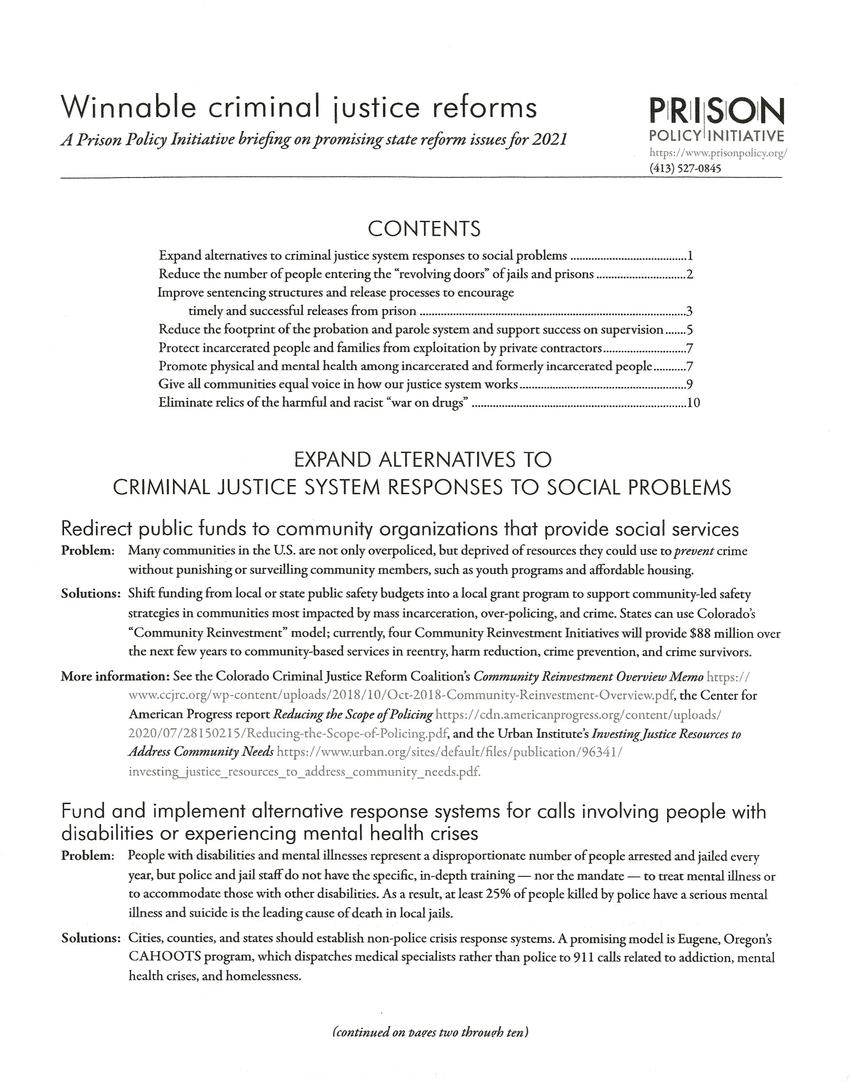

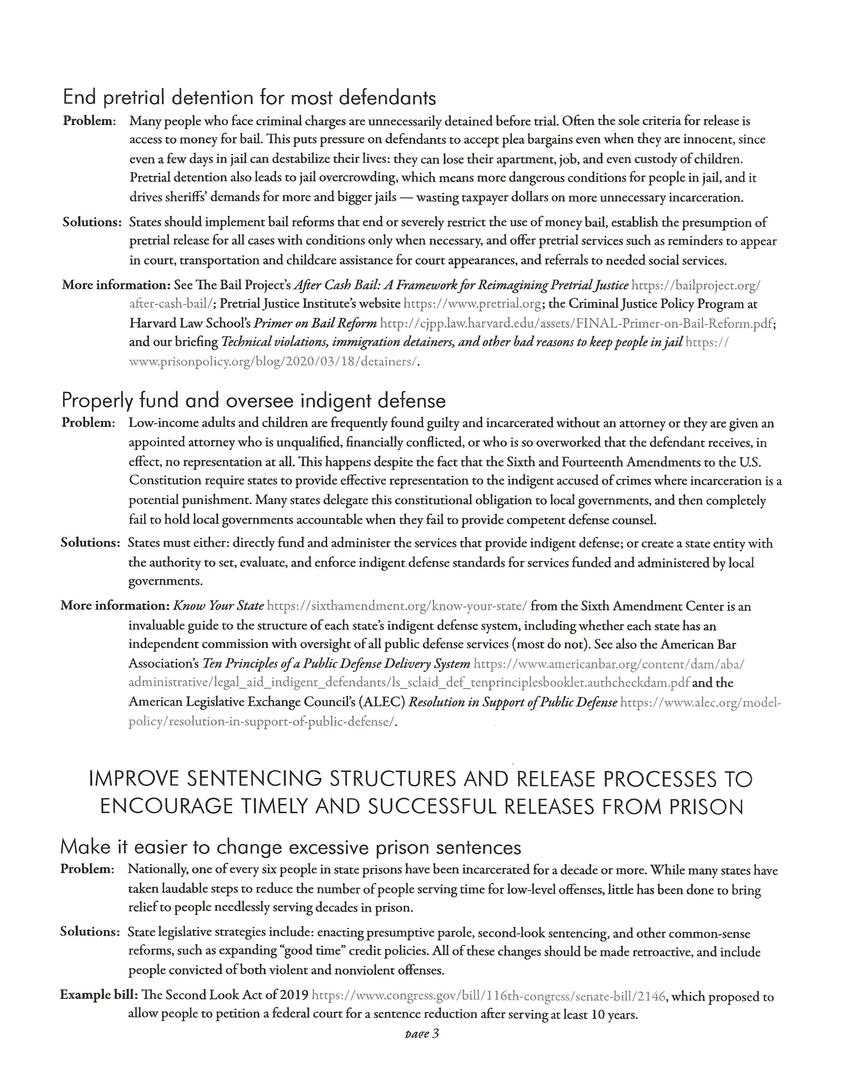
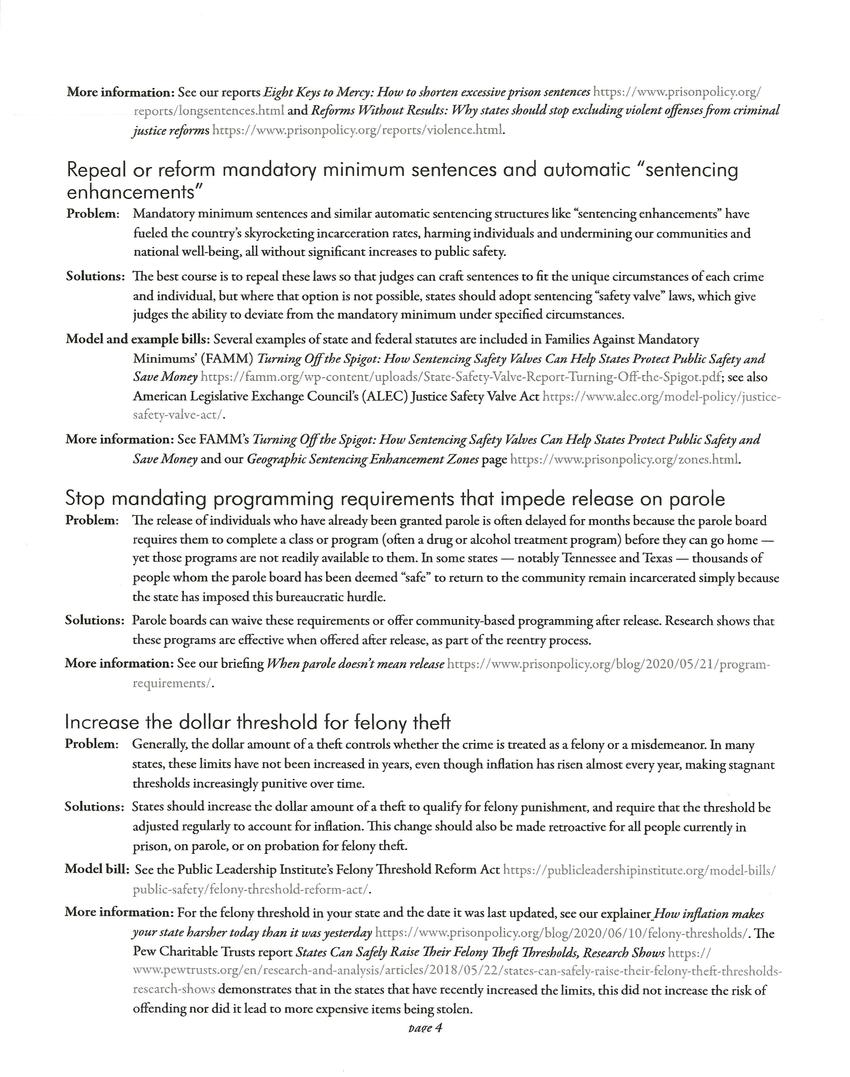
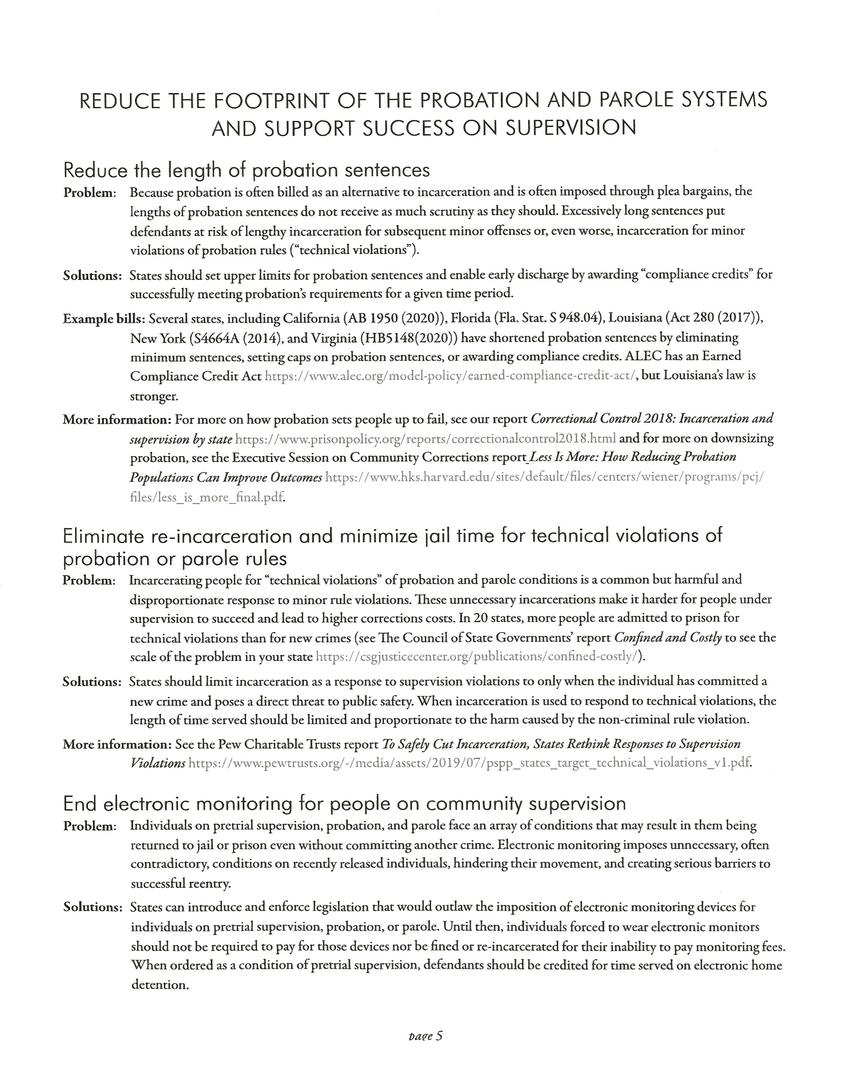
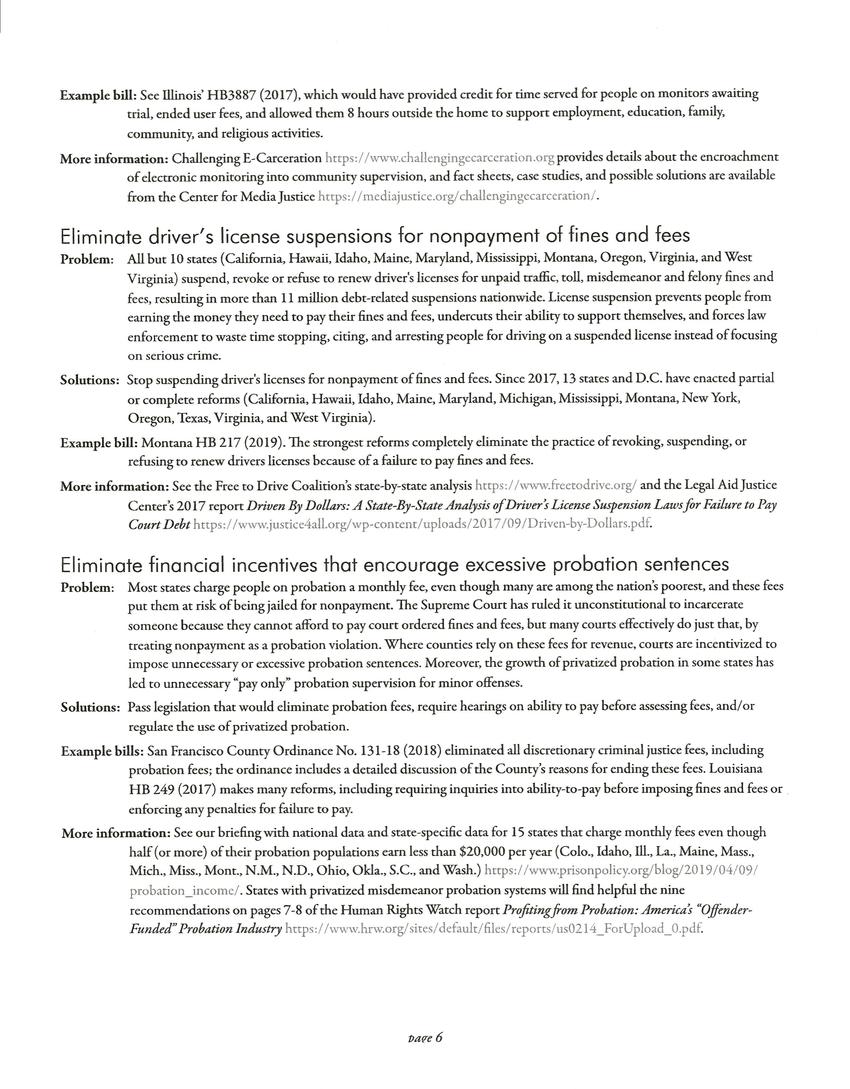

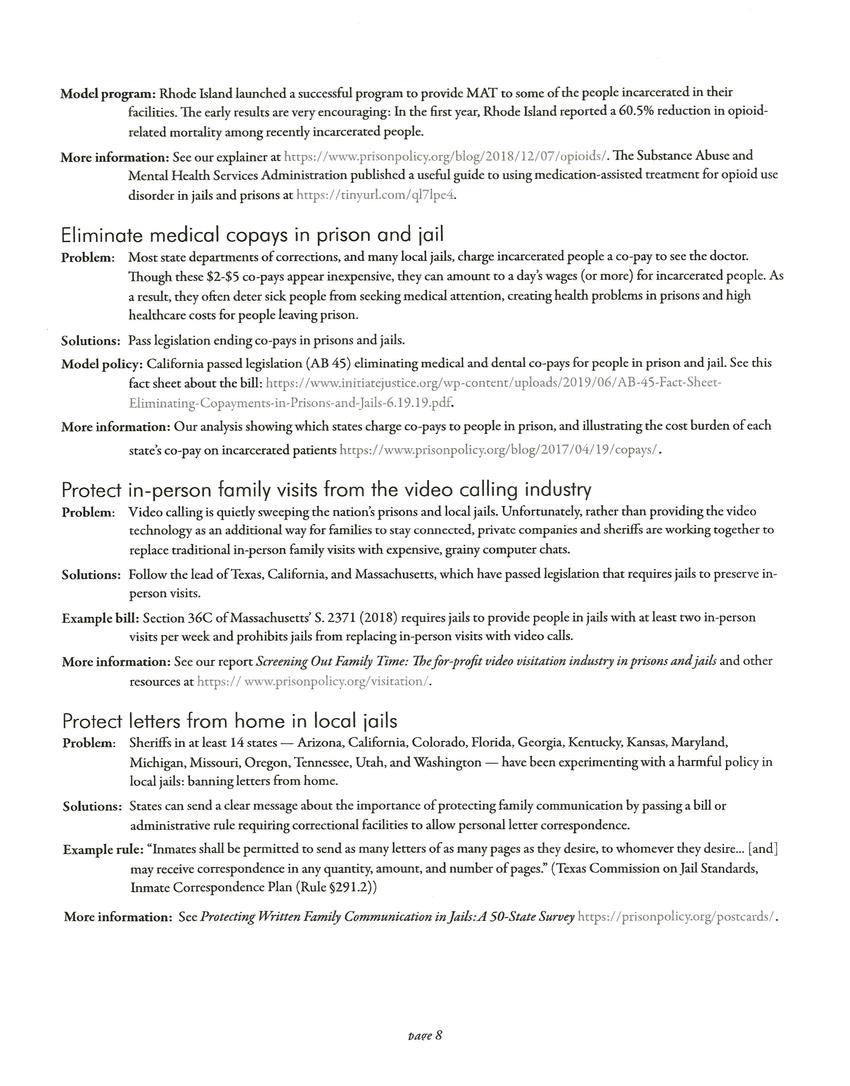
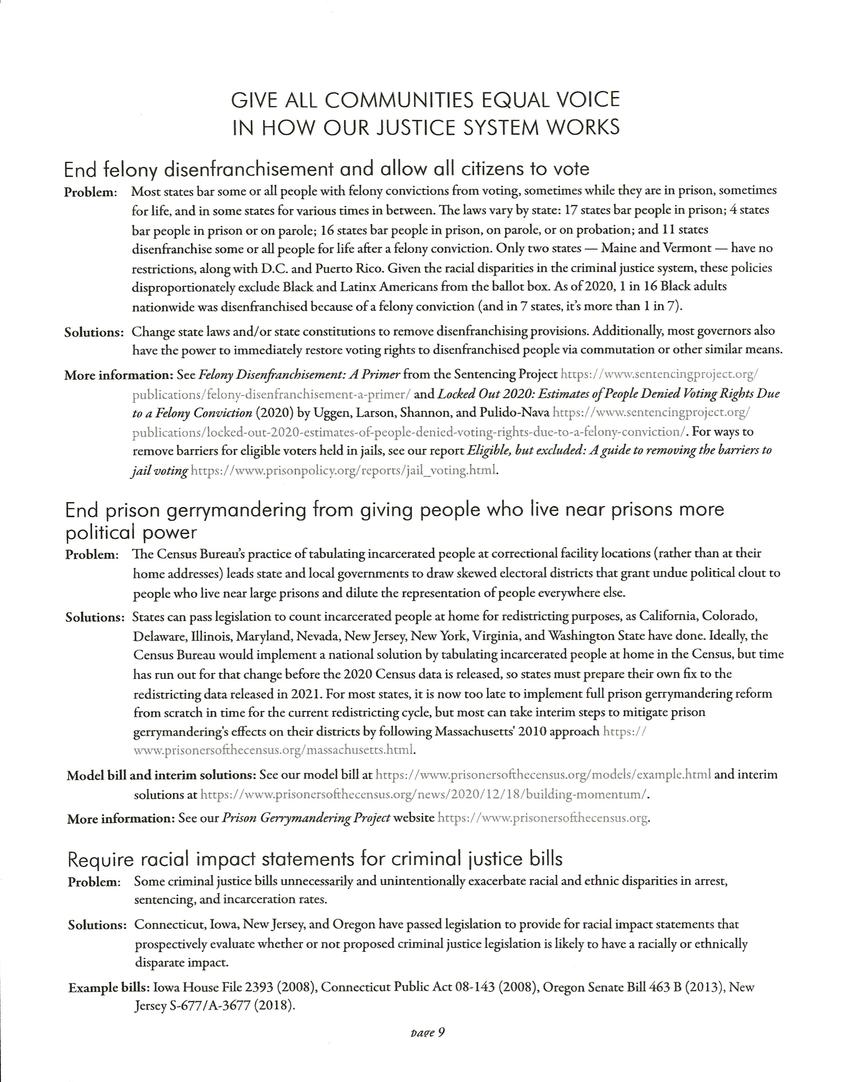


Replies (3)